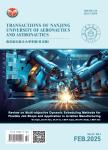Machining of Single‑Crystal Sapphire with Polysaccharide‑Bonded Abrasive Tool
采用多糖结合剂磨具的单晶蓝宝石加工作者机构:School of Mechanical EngineeringHefei University of TechnologyHefei 230009P.R.China Ultra⁃precision Machining CenterZhejiang University of TechnologyHangzhou 310014P.R.China College of Mechanical and Electrical EngineeringShaoxing UniversityShaoxing 312000P.R.China
出 版 物:《Transactions of Nanjing University of Aeronautics and Astronautics》 (南京航空航天大学学报(英文版))
年 卷 期:2020年第37卷第3期
页 面:360-369页
核心收录:
学科分类:080903[工学-微电子学与固体电子学] 0809[工学-电子科学与技术(可授工学、理学学位)] 08[工学] 080501[工学-材料物理与化学] 0805[工学-材料科学与工程(可授工学、理学学位)] 080502[工学-材料学]
基 金:supported by the National Science Foundation of China (Nos.51605129,51705330) China Postdoctoral Science Foundation (No. 2015M581977) Anhui Provincial Natural Science Foundation(No.1708085ME109)
主 题:polysaccharide binder microwave treatment single-crystal sapphire green manufacturing
摘 要:A novel polysaccharide-bonded abrasive tool is proposed for the green machining of single-crystal *** prescription and manufacturing process of the proposed tool is designed,and the gelation property of polysaccharide by microwave treatment is *** tool samples are fabricated,and a machining experiment on a single-crystal sapphire is *** is found that the crystallinity of polysaccharide gel decreases as the proportion of cross-linked polysaccharide *** tool samples with cross-linked polysaccharide present higher surface *** the new abrasive tool,the surface quality of sapphire wafer can be significantly *** new tool with an abrasive to binder ratio of 2∶1 attains a material removal rate of 0.68μm/*** is found that increasing the abrasive to binder ratio leads to better self-dressing performance but worse material removal ability and greater loss of abrasive tool *** validity of polysaccharide as an abrasive tool binder is preliminarily verified.




